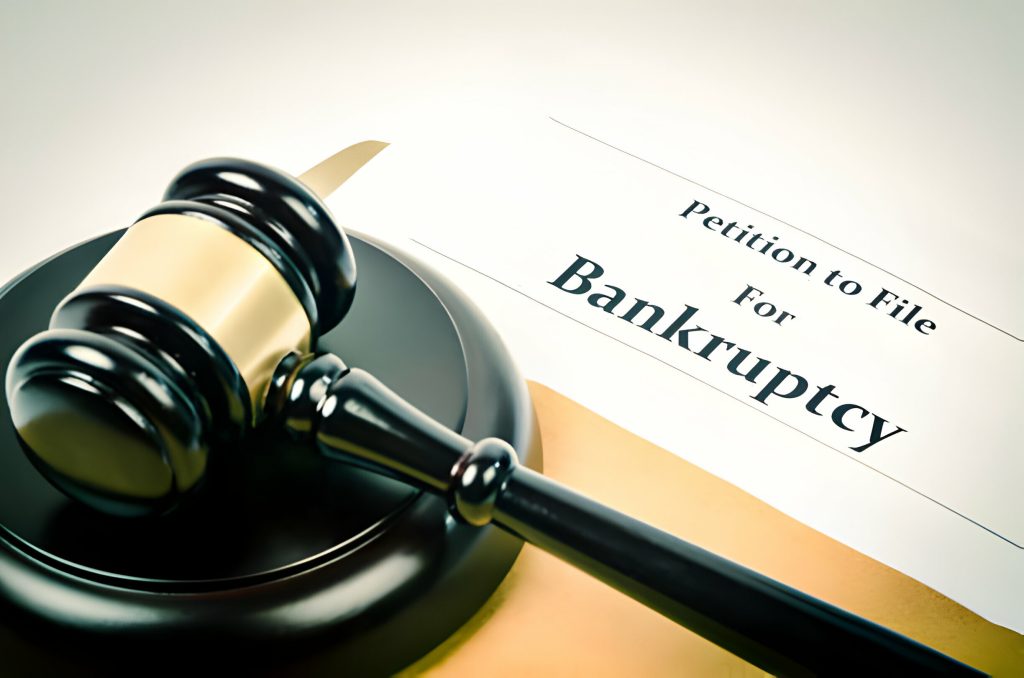If you find yourself knee-deep in bankruptcy proceedings, the term “post-petition” may have cropped up, leaving you with questions. Understanding the intricacies of post-petition matters is pivotal for a successful financial recovery. By unraveling the layers of what post-petition entails and how it influences your bankruptcy journey, you’ll be equipped to navigate this terrain with confidence. So, what exactly does post-petition in bankruptcy mean for you? Stay tuned to uncover the key insights that will help you make informed decisions and steer your financial ship towards smoother waters.
Impact of Post-Petition Debt
When considering the impact of post-petition debt in bankruptcy proceedings, it is crucial to understand the distinct responsibilities that arise from debts incurred after filing for bankruptcy. Post-petition debts carry significant financial implications for individuals going through bankruptcy. Proper credit counseling becomes essential to manage these debts effectively. Debt management strategies need to be carefully considered to ensure that post-petition debts do not disrupt the overall repayment plan. Repayment strategies must be aligned with one’s financial capabilities to avoid further financial strain. Additionally, trustee oversight plays a vital role in monitoring and guiding the handling of post-petition debts. It is crucial to adhere to the guidelines set by the trustee to navigate through these financial obligations successfully. By being attentive to credit counseling, adopting sound debt management practices, implementing effective repayment strategies, and cooperating with trustee oversight, individuals can better manage post-petition debts within the context of bankruptcy proceedings.
Debt Classification in Bankruptcy
Moving from the impact of post-petition debt, understanding debt classification in bankruptcy is essential for navigating the complexities of financial obligations during the process. Debt prioritization plays a crucial role in determining which debts are handled first, impacting timing implications and financial obligations. Debt management involves categorizing debts correctly to ensure compliance with bankruptcy laws and court requirements. Proper debt classification is vital for establishing a repayment plan that addresses both pre-petition and post-petition debts effectively.
Moreover, credit implications are significant in debt classification, as different types of debts can have varying effects on credit scores and financial stability. By prioritizing debts, managing them appropriately, and understanding the credit implications, individuals can navigate bankruptcy proceedings more effectively and work towards a fresh financial start. Proper debt classification ensures that financial obligations are met in a structured manner, leading to a smoother bankruptcy process and potential credit recovery in the future.
Challenges in Debt Determination
Navigating the complexities of financial obligations in bankruptcy requires a keen understanding of the challenges involved in determining debt classification. When facing debt determination hurdles, consider the following key aspects:
- Debt Timing Clarity: Clarifying the timing of debts is essential. Distinguishing between pre-petition and post-petition debts can be challenging, especially when payments straddle the boundary between the two categories.
- Financial Obligations Categorization: Categorizing financial obligations correctly is crucial. Monthly payments on existing loans, such as mortgages and car loans, need to be accurately classified to ensure proper handling in bankruptcy proceedings.
- Payment Challenges: Meeting payment obligations can pose difficulties. Ensuring that payments are allocated correctly between pre-petition and post-petition debts is vital to avoid complications during the bankruptcy process.
- Debt Categorization Complexity: The complexity of debt categorization underscores the need for a meticulous approach. Achieving clarity in categorizing debts will help in managing financial responsibilities effectively throughout the bankruptcy journey.
Bankruptcy Code Requirements for Debts
To ensure compliance with the Bankruptcy Code, debtors must prioritize timely payment to utilities within 20 days of filing, safeguarding against potential service termination for pre-petition debts. Understanding obligations and legal compliance is crucial in managing post-petition debts. Failure to meet these requirements can have significant financial implications and impact debt management during the bankruptcy process.
Ensuring payment assurance for utility services is essential for bankruptcy protection. Debt timing plays a critical role in maintaining essential services and upholding obligations to creditors. Expert guidance can help navigate the complexities of the bankruptcy process, ensuring that all requirements are met to safeguard against interruptions in utility services.
Purpose of Post-Petition Payment Policy
Understanding the Purpose of Post-Petition Payment Policy is crucial for navigating the complexities of bankruptcy proceedings and ensuring the continued provision of essential services while balancing the rights of debtors and creditors.
- Safeguarding Services: Post-petition payment policies aim to safeguard essential services like utilities by ensuring timely payments to utility companies, preventing service disruptions that could negatively impact both debtors and creditors.
- Balancing Rights: These policies strive to balance the rights of debtors and creditors in bankruptcy proceedings, ensuring fair treatment for all parties involved while upholding the obligations outlined in the bankruptcy code.
- Financial Obligations: By outlining clear guidelines for post-petition payments, this policy helps debtors understand their financial responsibilities after filing for bankruptcy, reducing confusion and potential non-payment risks.
- Understanding Implications: Debtors need to comprehend the implications of non-payment of post-petition debts, as failure to adhere to these obligations can have legal consequences and hinder the progress of the bankruptcy process.
Expert Assistance in Bankruptcy
For expert assistance in navigating bankruptcy proceedings effectively, consider reaching out to Bernstein-Burkleys Bankruptcy & Restructuring group. Their team offers specialized knowledge in bankruptcy counseling, debt restructuring, financial management, credit negotiation, and debt discharge. When facing the complexities of pre-petition debts and post-petition payments, their expertise can provide valuable insights and support for both creditors and debtors.
Bernstein-Burkleys Bankruptcy & Restructuring group is equipped to help you manage pre/post-petition financial obligations with precision. Whether you require guidance on structuring a repayment plan in Chapter 13 bankruptcy or need assistance in negotiating debt settlements, their experience can be instrumental in navigating the intricacies of the bankruptcy process. By consulting with their team, you can gain a better understanding of your options and make informed decisions to work towards a successful resolution of your financial challenges. Don’t hesitate to leverage their expertise for comprehensive support in handling your bankruptcy concerns.
Handling Post-Petition Debts in Chapter 13
When managing post-petition debts in Chapter 13 bankruptcy, it is crucial to seek court approval before incurring any new debt to ensure compliance with your repayment plan. Here are some key strategies to handle post-petition debts effectively:
- Debt Management: Prioritize paying off post-petition debts within the framework of your Chapter 13 plan to avoid any discrepancies.
- Financial Planning: Incorporate any new debt thoughtfully into your budget and repayment strategy to maintain financial stability.
- Repayment Strategies: Develop a clear plan for managing post-petition debts alongside your existing repayment obligations to stay on track.
- Debt Counseling: Consider seeking guidance from a debt counselor to navigate the complexities of post-petition debts and repayment structures effectively.
Getting Court Approval for New Debt
To ensure compliance with your Chapter 13 repayment plan, it is essential to seek court approval before incurring any new debt during the bankruptcy process. Getting court approval for new debt involves working through the trustee’s office to seek permission before taking on additional financial obligations. When requesting approval, you must provide valid reasons for needing the additional credit and demonstrate a clear understanding of the financial implications on your repayment plan. The court process for obtaining approval for new debt is critical to ensure that all actions align with the requirements of your repayment plan and the bankruptcy proceedings. By involving the trustee and the court in the decision-making process, you can effectively manage your debt within the confines of the Chapter 13 bankruptcy guidelines. Remember that the trustee plays a crucial role in overseeing your financial decisions, making their approval essential for any new debt incurred during this period of debt management.





